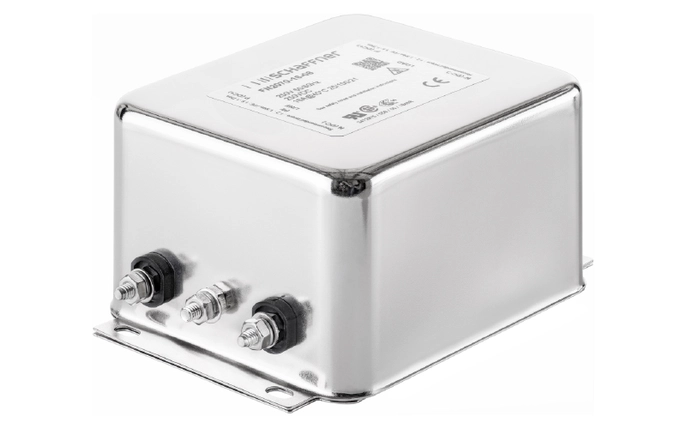A treadmill machine for a leading fitness equipment maker was losing the race to market when Schaffner EMC experts intervened. The source of the problem was found in an often-overlooked source of conducted emissions.


An Upgrade with Failing Grades
Life Fitness, a leading brand of gym equipment, was re-releasing their top-of-the-line treadmill called Symbio. The release was upgraded with several improvements including an enlarged 36" glass display. Besides the control panel, the product changed its power supply to meet Power Factor Correction (PFC) requirements.
Before the redesign, the treadmill passed conducted emissions testing using a standard Schaffner filter, FN2070-25-08. The second time around, however, it was failing.
Life Fitness has an in-house testing lab, so its engineering team was able to experiment with alternative EMI solutions. They tried out several different filters, capacitors, chokes and inductors, but with no luck.

Noise Source
With a dwindling supply of ideas for what to do next, the test engineer at Life Fitness discussed the issues around the Symbio with Schaffner Applications Engineer Mike Vilbrandt. Mike shared the test results with his colleague Dave Armitage.
After reviewing the results, Dave intuited the product might have a differential mode problem. Conducted emissions are categorized by either common mode (CM) or differential mode (DM) interference. Mitigation techniques that are effective for CM noise are not necessarily effective for DM noise.
Following his hunch, Dave enlisted EMC Engineer Gomar Charlton to set about gathering the parts for a quick sampling of dedicated differential mode filters for testing.



A Race Against the Timeline
Life Fitness received this care package and immediately started re-testing the treadmill. Success! There was a significant improvement, which proved that Dave was correct in his analysis.
For a more formal solution, the Schaffner team prepared a custom 25 A differential mode filter for production.
The new Symbio was already scheduled to be released when Schaffner was pulled into the process. Running at top speed, the Schaffner team turned a 6-month development cycle into a project of just 10–12 weeks. Phew – now that’s a workout!
When you feel like you’re going in circles over EMI issues, just ask Schaffner.
MORE POWER TO YOU.


